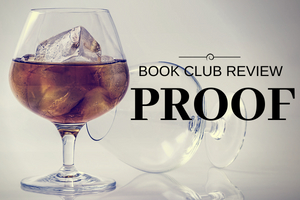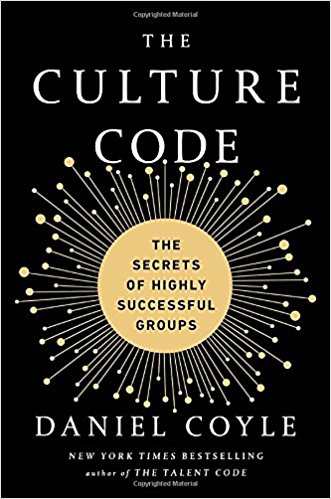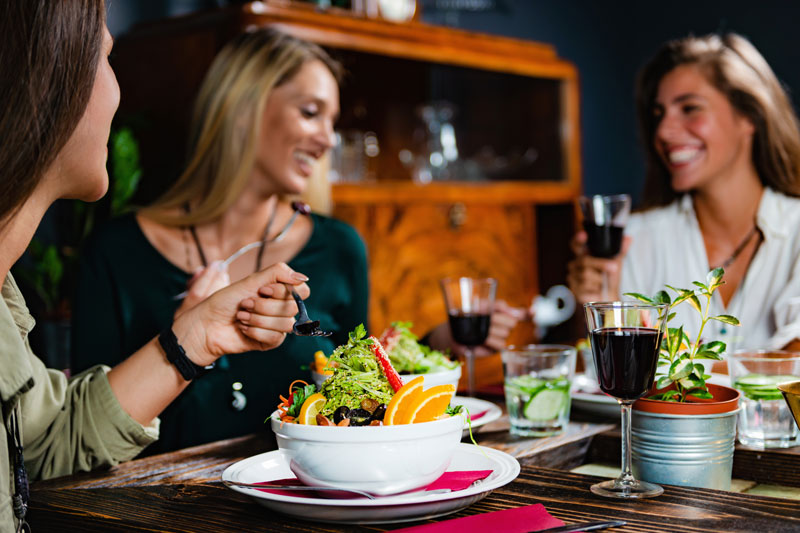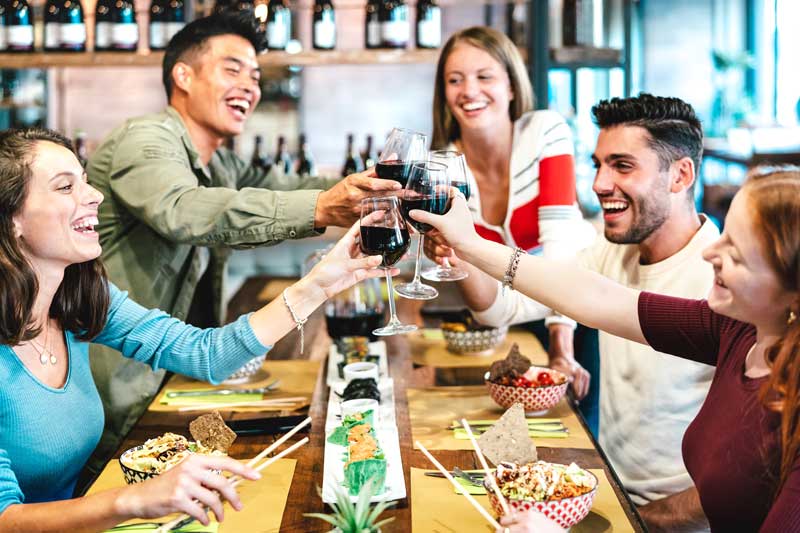 Have you ever thought about how your favorite wine or drink is produced? Our discussions about the wine and spirits industry have mainly focused on the impact of technology on businesses, whether it be incorporating analytics for long-term strategic planning, gaining additional insights into sales data, or understanding consumer preferences. However, we don’t talk too much about the science behind creating the perfect drink. Until now.
Have you ever thought about how your favorite wine or drink is produced? Our discussions about the wine and spirits industry have mainly focused on the impact of technology on businesses, whether it be incorporating analytics for long-term strategic planning, gaining additional insights into sales data, or understanding consumer preferences. However, we don’t talk too much about the science behind creating the perfect drink. Until now.
Tweet: Dimensional Insight book club: Proof – The Science of Booze
For the past six weeks, we have been enjoying the second read in the Dimensional Insight Book Club. We have been busy reading, Proof: The Science of Booze, whether trying to enjoy the spring weather or with a glass of wine. Curious as to what our readers thought about the book?
Meet our panel
Our book club panel for Proof consists of Rose Weinberger, senior marketing manager; Terry Nolan, regional sales director for the beverage alcohol industry; Doug Powers, product manager for our DiveTab mobile product; Kathy Sucich, senior content and communications manager; and myself. Here are our thoughts on this book.

The Dimensional Insight book club panel. From L-R: Rose Weinberger, Terry Nolan, Doug Powers, Kathy Sucich, and Natalie Cantave.
Q: As someone who works in the wine and spirits business, what is your main takeaway from the book?
Rose: My main takeaway would be that the chemistry of booze is complicated! Any drink that tastes incredible should be respected for all the complexity behind creating it.
Terry: There’s lots of chemistry, historical alchemy, and aging on alcohol worldwide. I had no idea about the different strains of yeast, rice, barley and how they react to make sugars that yeast then consumes. It’s a really good look at the chemistry of the alcohol production business. More and more, it seems that flavors and smells are measured by mass spectrometers! I’ll never look at a drink again in the same way as before I read Proof. There’s so much that goes into making a product.
Kathy: Well, I knew that the “selling” part of the wine and spirits business was difficult, with challenges such as the three-tier system, competition, and trying to do a lot with sometimes limited budgets. But after reading this book, I gained an appreciation for how hard all the stuff is before the sales process. Understanding fermentation, distilling, aging—it was all really geeky (interesting!) stuff. I can now be the nerd at the party explaining to friends how their drink of choice was really made.
Natalie: I didn’t realize how much goes into producing alcohol. I remember learning about fermentation in school but didn’t realize how complex the distilling process was. It was really eye-opening for me to hear about the complexity behind the chemistry of alcohol. After reading Proof, I have a greater sense of understanding into the wine and spirits business.
Q: Adam Rogers breaks down the science behind alcohol production. Based on his storytelling throughout the book, how can suppliers and distributors incorporate analytics to improve their production processes?
Kathy: This passage from the end of the book stood out to me: “We humans were making booze before we had science, much less a science of booze. Now that we know more, we have more control over the whole process.” This was talking more about the biology and chemistry aspects of alcohol production, but I think we can apply this to analytics. We can now use analytics to better understand the production process and have more control over it. I think there are immense opportunities for suppliers to use analytics to better understand consumer preferences and trends, which will help them determine which grapes to plant for which wine varietals (see Biltmore Wines case study for an example) or which types of alcohol will gain popularity. In addition, suppliers can use analytics to optimize production processes by reducing downtime and improving workflow.
Natalie: After attending the WSWA 75th Annual Convention and Exposition earlier this month, I learned how our customers as well as those in the industry are using analytics within the wine and spirits business. I definitely think there are opportunities for suppliers and distributors to use analytics to better track data and quotas, manage their salesforce, know where their products are being sold, and understand consumer preferences. I also think analytics will play a greater role in optimizing production processes within the industry.
Rose: Suppliers and distributors need to measure and track everything: temperatures, humidity, quantities, times, and on and on! It is only through observation and analysis that one can uncover where things are working and where they are not…and then look for improvements.
Terry: Science, chemistry and data! The portion of the book which focused on distilling was eye-opening to me. Most whiskeys are distilled in eight locations throughout the U.S., the largest being in Indiana. From there, they mix and add flavor to each of their individual products. This is where the marketing of the product to consumers begins. The correct packaging (bottle, shape, size, label) then become important in telling the product’s story to the consumers. Throughout history, humans have created a place for alcohol in our lives. That being said, suppliers and wholesalers need to include data and analytics to understand who is buying what products, and why. This involves collecting data from consumers (on and off-premise), clubs, bars, restaurants, and retail locations. The more you know and understand, the better off you are as a wholesaler and supplier. Making sense of this data is what we do at Dimensional Insight.
Q: The following quote would describe the industry’s objectives: “…the design of a label, the shape of a bottle, or the décor of a bar may just be as important as what’s actually being poured.” Based on this quote, what impact does psychology play on consumer decisions and how can those in the industry work to better understand customers and their preferences?
Terry: It’s all in the product’s story line and marketing. Sure, there has to be a good product in the bottle, can, or package. The taste-testing of the product should give distillers a hint on how special that product really is in the mind of a consumer. But minds are funny things. The package, place where the drink is imbibed, or a toast to something special all impact how and why consumers purchase products. For example, I see a new Vodka brand enter the market, and I think to myself “Do we really need a new Vodka?” I guess, with the proper package, marketing, and taste, we do.
Kathy: Psychology plays a huge role in consumer decisions. I may be a bit biased here, but I think wine and spirits organizations can better understand consumers and their preferences through more data-driven practices. Take, for example, Campari America. I visited the company’s office in San Francisco earlier this year, and I talked to the organization about how it uses data to understand preferences. Back when the recession hit about 10 years ago, people stopped going out to eat and focused more on staying in to save money. Campari America was able to recognize that through data analysis and started to focus more on providing consumers with a better in-home experience. Through data, Campari America was able to both better understand its customer and maintain its profits during a difficult economic period.
Doug: Psychology is a huge factor in a lot of things but it plays even a larger role when dealing with wine and spirits. Just think back a while ago when lobster was considered a prisoner food and now it is served at high end restaurants. Why did this change? Marketing and psychology. I believe even a 10-year-old can tell that the liquor that comes in a plastic bottle isn’t as nice as the one that is in a glass container. I think a takeaway is that a company that can spend money on a nice bottle is also going to have a nice product. It might be similar to being able to tell what type of hotel it is just by looking at the entrance. Then it’s just about being able to create an image or bottle which stands out from the crowd and appeals to the market.
Rose: Although market research could be conducted to hear customers talk about what they like or dislike, the saying “Money talks…” is relevant here. By looking at what is selling and what is not selling, we can learn a lot about what people like and dislike.
Natalie: As a psychology major in college, I was fascinated by the role psychology plays on consumer decisions. During one of the industry events at WSWA, I learned about the importance of customers interacting with a bottle label or even the bottle’s shape, especially when asked to participate in “on-the-spot” market research. It was interesting for vendors to ask about my “millennial” perspective and preferences. Even though psychology plays a role in understanding why certain people are more willing to buy Grey Goose vs. Ketel One or Bacardi vs. Captain Morgan, the industry still needs data to better understand consumer preferences. Combined with data, the industry will have a greater ability to create products that will appeal to their various target markets’ minds and taste buds.
Q: Alcohol has played a prevalent role in our society, dating back to its early history of alcohol production during the agricultural revolution to the role alcohol consumption plays in social settings. What will the future hold for the wine and spirits business?
Doug: I don’t think things will change that much in the future since alcohol has been around for a very long time, and its role has been sort of constant. There are stories of crazy drunken nights in the Roman times to the American Revolution to present day. For better or worse, people will continue to drink alcohol, which is in part guaranteed by our 21st Amendment. Since the demand will always be there, the only thing to objectively improve upon would be supply chain management and the use of analytics which would allow for a more efficient business.
Rose: As with any mature industry, wine and spirits businesses have had to innovate in order to differentiate themselves from their competitors. With the growth of innovation, specialized niches have grown (e.g. microbreweries). I anticipate that over time, demand for specialized products may not meet production and there will be some industry consolidation with specialized branches of the wine and spirits industry.
Kathy: Did anyone else read the afterword? Afterwords are usually boring, but this one was pretty good. Rogers talks a little about the future and innovation in the industry, with new flavored drinks and so on. But then he says this: “But the combination of historicity and authenticity with taste and smell is still powerful, because it sums to emotion and memory. If people responded positively to Proof, I think it was because the book is fundamentally about how we perceive the world around us—through the mostly familiar experience of wine with dinner, a cocktail at a bar, a beer at a baseball stadium.” This resonated with me. Whatever the future holds, it will all be about the emotion and feelings associated with alcohol.
Terry: There are many new products in the marketplace, and there are products that have been around for years. You open a bottle of a product you like and expect it to be the same tried and true taste. As humans, we have evolved and so has our chemistry. The future will be ever-changing with one constant: we like to drink! We as a human race have been drinking for thousands of years. Suppliers and wholesalers will continue to create and market better and more innovative products. There is no end in sight for the wine and spirits business as long as we continue to drink.
Q: If you were to read this book again, what drink would you pair with it?
Rose: If I were to read this book again, I’d like to pair it with a Sazerac, a New Orleans variation of a cognac/whiskey cocktail. The only time I had a Sazerac was when I went to New Orleans with my sisters for the French Quarter Festival. Since it was my first time there, I studied travel book recommendations before I arrived. One author suggested the Sazerac at “Tujagues” restaurant at 823 Decatur Street because it was the second oldest restaurant in New Orleans—a classic. Anyway, the bartender that made me my Sazerac made a real production out of it. She had a lengthy process that was very entertaining—to the point that a group of people at the bar stopped what they were doing to watch her throw the old-fashioned cocktail glass with liquor into the air, twirling it to use centrifugal force to coat the interior of the glass. This must have been her way of “rinsing” the glass with absinthe. By the time I took my first sip, I was convinced this drink was *special*. And that is the way the book made me feel about alcohol consumption—it shouldn’t be a run-of-the-mill experience but rather something *special*.
Terry: Single Malt Scotch on the rocks.
Kathy: Well, I read part of this book while drinking a Sunday Paper (imperial stout) from Exhibit ‘A’, a local brewery in the city where I live. (Support local businesses!) However, when Rogers talked about visiting Scotland and the distillation process, I found myself craving a Glengoyne 18-year scotch, which I tasted at a WSWA event last year, so I’d go for that.
Doug: Some type of scotch. I’m currently thinking of having a Talisker.
Natalie: I’d pair it with a glass of white wine, specifically a Moscato. I can picture myself re-reading the book outside my apartment on a bright, summer day.
Next Book Club pick: The Culture Code
Curious about our book club? For our next selection, we pivot from alcohol to organizational culture and group dynamics. Stay tuned for our upcoming post on The Culture Code. Daniel Coyle, a New York Times bestselling author, shares insight into the importance of culture and its impact on organizational success. Coyle also offers guidance and advice on how other scan learn, collaborate, trust each other, and drive change. If you want to read along with us, you have until July 12. Also, let us know if you’d like to be on our book panel or have any suggestions for future selections!
- Understanding Wineries’ Top 3 IT Priorities - September 18, 2018
- 3 Skills Tomorrow’s Distributor Executives Need to Know - August 29, 2018
- Dimensional Insight Book Club: Why We Sleep - August 23, 2018



